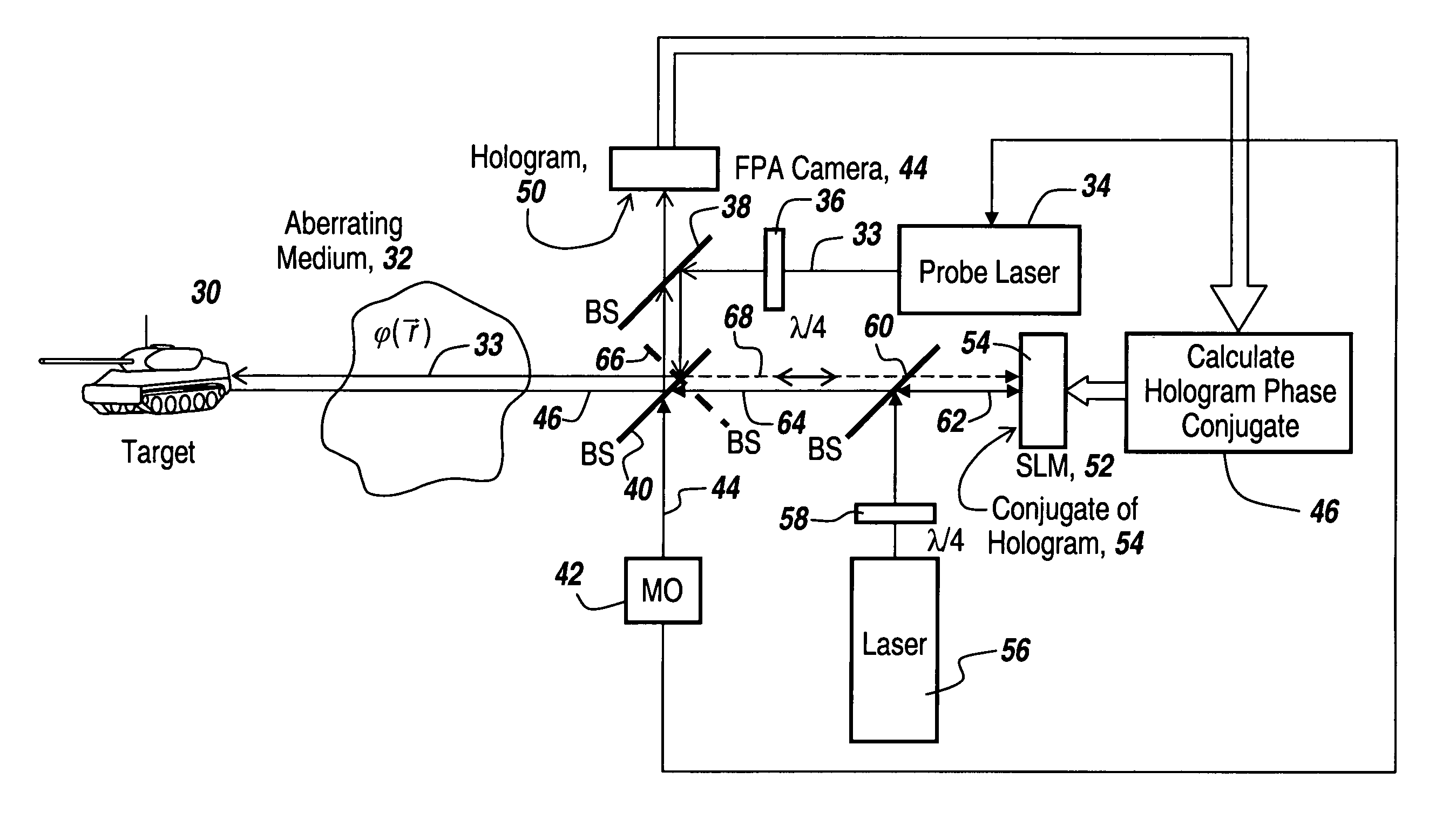Method and apparatus for compensating for atmospheric turbulence based on holographic atmospheric turbulence sampling
a technology of atmospheric turbulence and atmospheric turbulence, applied in the field of linear phase conjugation atmospheric turbulence compensation, can solve the problems of affecting the beam that finally reaches the target, affecting the beam that reaches the target, and lasers propagated over any distance in the atmosphere suffer from a significant decrease in fluence at the target, and achieves a much-enhanced signal-to-noise ratio
- Summary
- Abstract
- Description
- Claims
- Application Information
AI Technical Summary
Benefits of technology
Problems solved by technology
Method used
Image
Examples
Embodiment Construction
[0040] Referring now to FIG. 1, there are a series of diagrams involving the beam spread of a laser beam, which beam spread is due to atmospheric turbulence between a transmitter 10 and a target area 12.
[0041] For an uncorrected laser beam there can be as much as a 1200 microradian divergence of beam 14 such that at the target area the area subtended by the beam, here illustrated at 16, is relatively large and can, for instance, be much larger than the target that is intended to be illuminated.
[0042] If beam 14 is wander-corrected as illustrated by beam 14′, meaning corrected by SFM techniques, then one could expect an approximate 700-microradian divergence, which would paint a target 18 with a relatively wide illumination pattern 20 that in this case completely obscures the target. More importantly, it is impossible with the wander-corrected beam to be able to pinpoint a part on a target for which a kill would be maximally effective.
[0043] As can be seen from beam 14″, the resid...
PUM
 Login to View More
Login to View More Abstract
Description
Claims
Application Information
 Login to View More
Login to View More - R&D
- Intellectual Property
- Life Sciences
- Materials
- Tech Scout
- Unparalleled Data Quality
- Higher Quality Content
- 60% Fewer Hallucinations
Browse by: Latest US Patents, China's latest patents, Technical Efficacy Thesaurus, Application Domain, Technology Topic, Popular Technical Reports.
© 2025 PatSnap. All rights reserved.Legal|Privacy policy|Modern Slavery Act Transparency Statement|Sitemap|About US| Contact US: help@patsnap.com



